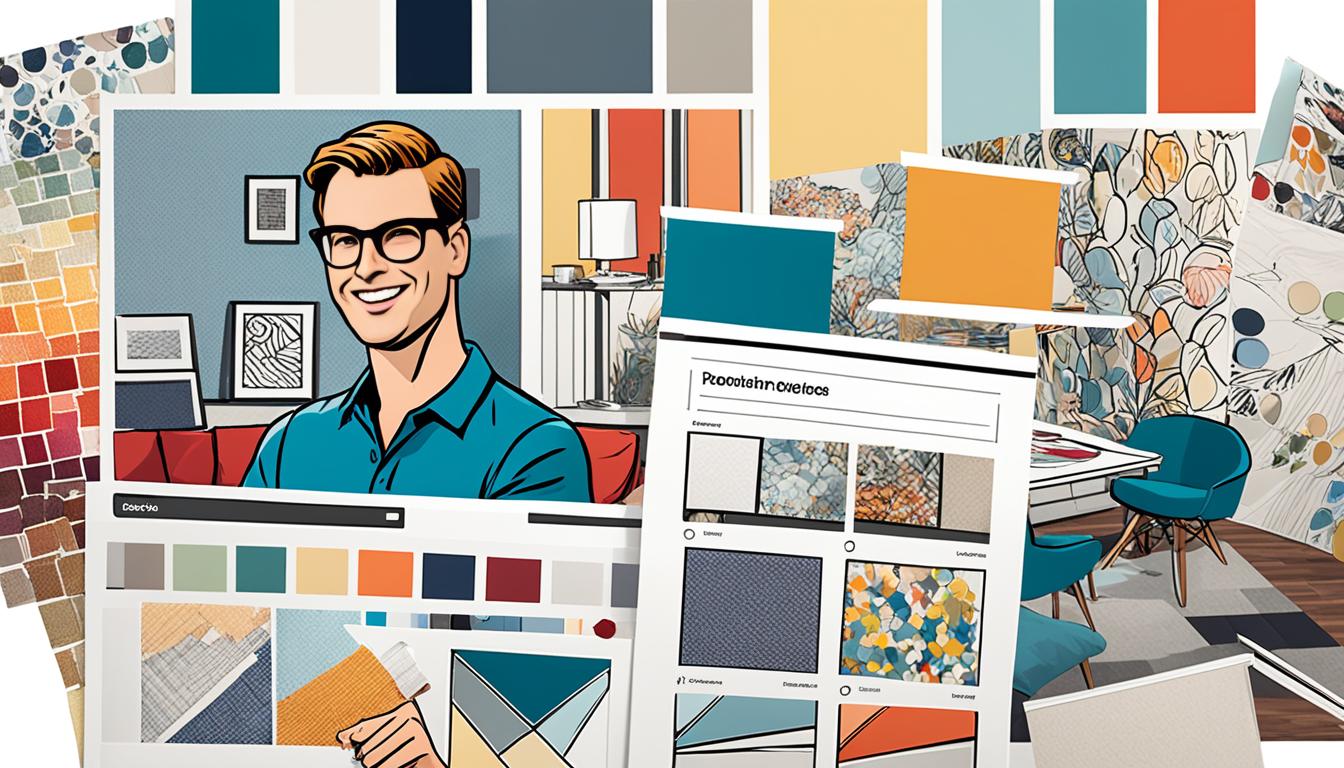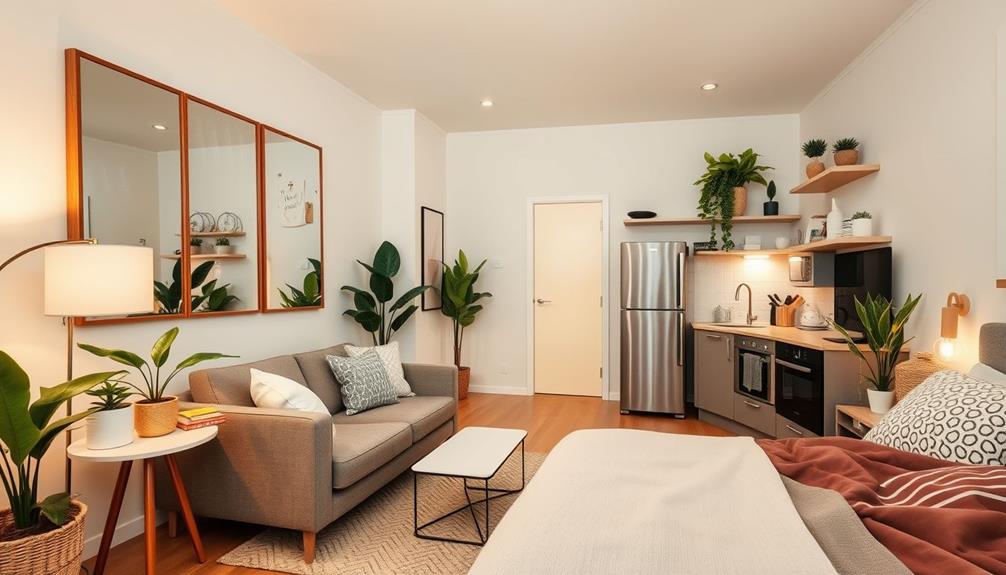Creating interior design boards is a crucial step in the design process, allowing you to visualize your ideas and plan your space effectively. These boards help you organize your thoughts and translate them into a cohesive layout, making it simpler to choose color schemes, furniture, and decor. Whether you’re just beginning your journey in interior design or you’re a seasoned expert, knowing how to create interior design boards will enhance your planning and decision-making. In this guide, we’ll explore essential interior design board tips and provide actionable insights for crafting interior design boards that bring your vision to life.
Key Takeaways
- Mood boards help visualize color, textures, and room elements for effective design.
- Physical mood boards are valuable tools for client visualization during projects.
- Digital platforms like PicMonkey Pro and Canva Pro offer excellent resources for creating boards.
- Mood boards can evolve throughout a project, from inception to final adjustments.
- Using classic materials and textures contributes to a timeless interior design aesthetic.
Understanding the Importance of Interior Design Boards
In any interior design project, the importance of interior design boards cannot be overstated. These boards serve as a visual guide, helping you to bring your ideas to life and ensuring that every detail reflects your vision. Utilizing design boards enhances the planning phase, allowing for a cohesive look before diving into execution. This approach not only fosters creativity but also provides clarity to clients and designers alike.
The Role of Design Boards in Interior Projects
Design boards play a crucial role in shaping interior projects. They showcase your vision through a collection of images that represent materials, colors, patterns, and furniture styles. By assembling various elements like textures and accessories, you create a comprehensive image of how your space will ultimately appear. This not only helps in aligning ideas but also facilitates better communication with stakeholders involved in the project. Understanding the interior design board benefits gives you a strategic advantage by ensuring that everyone stays on the same page throughout the process.
How They Help Save Time and Money
Saving time and money with design boards is one of their most significant advantages. A well-thought-out design board minimizes the risk of costly mistakes that often arise from impulsive purchases or miscommunication. By visually experimenting with different components before finalizing selections, you effectively eliminate trial and error. Utilizing tools like Mattoboard, which allows for drag-and-drop features for creating 3D design boards, enhances your ability to visualize layouts quickly. Such planning reduces costly revisions and ensures that every choice made is both intentional and aligned with the overall design strategy.
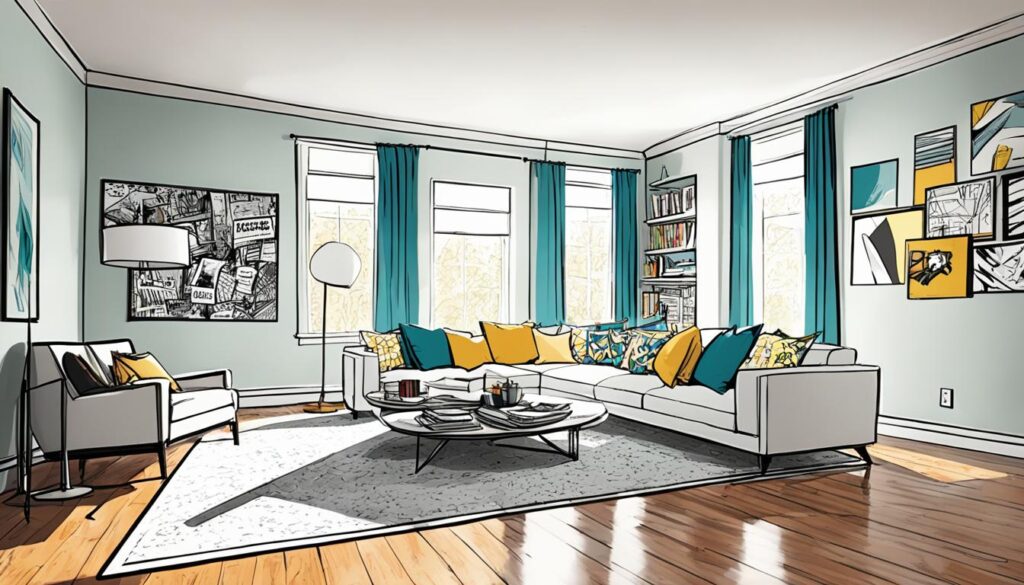
| Aspect | Benefits |
|---|---|
| Visual Clarity | Helps in conceptualizing the design direction |
| Communication | Improves alignment among team members and clients |
| Cost Efficiency | Reduces the chances of expensive design errors |
| Creative Flexibility | Enables various design experiments before final decisions |
How to Create Interior Design Boards
Creating effective interior design boards taps into your creativity and organizational skills. By following a step-by-step interior design board guide, you can create impactful mood boards that articulate your vision. Select elements that capture the feeling and style you want for a room or space.
Step-by-Step Guide to Building Your Board
Start by gathering images and elements that inspire you. Begin with your favorite online resources such as Pinterest or Google Images. This phase involves sourcing visuals that align with your design goals. Create a dedicated space to organize these images for easy access.
- Collect Images: Search for designs or colors that resonate with your concept.
- Organize Elements: Sort the images into categories – texture, color, and furniture.
- Use Digital Tools: Choose interior design board software, like Canva or Milanote, for creating your mood board.
- Experiment: Arrange images and experiment with layouts until the composition feels right.
- Collaborate: If working with a team, share your mood board for feedback and adjustments.
Choosing the Right Software or Tools
Selecting the appropriate tools can enhance your mood board experience significantly. Popular options include Canva, Adobe Illustrator, and Milanote. Canva stands out for its free, user-friendly interface, making it ideal for beginners. You can easily upload, resize, and edit images to fit your vision. For that extra touch, consider using Canva Pro or platforms like remove.bg for background removal.
Milanote also offers a robust image library filled with millions of stunning photos. Its Web Clipper feature allows for direct image saving from various websites, supporting seamless creativity. Those serious about color precision can use resources like Encycolorpedia.com to find hex codes for paint colors.
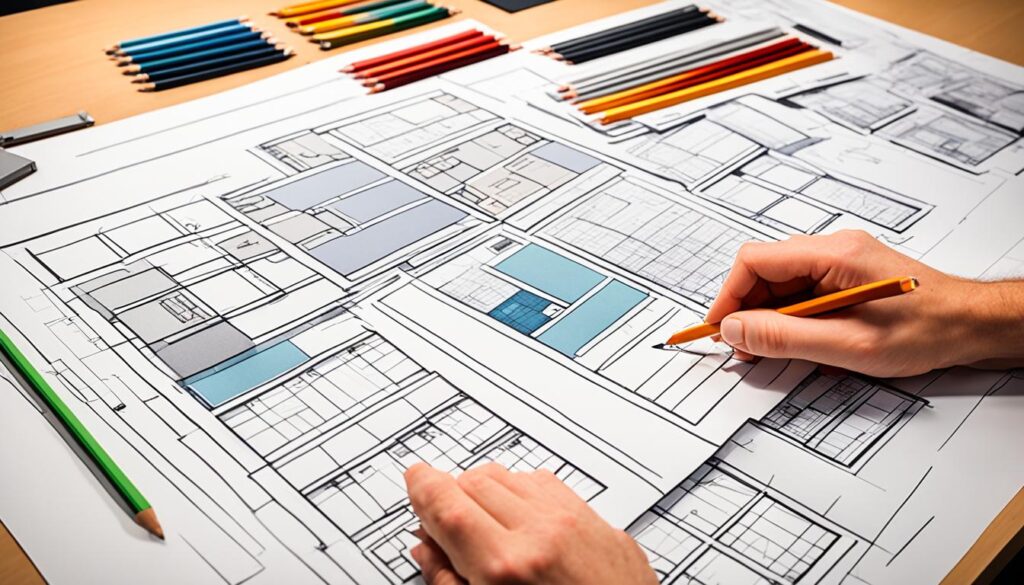
Best Practices for Crafting Effective Mood Boards
Creating mood boards can transform your design process, helping to visualize ideas and coordinate elements seamlessly. To enhance your skills, consider the best practices for interior design boards that set a solid foundation for your projects.
Tips for Selecting Images and Elements
When selecting images for mood boards, aim for visuals that reflect your vision accurately. Seek out a variety of images that represent:
- Primary colors
- Textures
- Materials
Incorporating a diverse range of items—from wall colors and furniture to decorative accessories—ensures a comprehensive portrayal of your design. This approach aligns with the notion of best practices for interior design boards, providing a clear pathway to visualize the final outcome.
Combining Colors and Textures Successfully
The art of combining colors and textures in design boards requires a strong understanding of color theory. Ensure a harmonious look by considering color relationships, balance, and contrast. For instance, choose contrasting fabrics and materials to create depth and interest. Utilizing fabric swatches, paint samples, and flooring images can highlight different elements, helping you assess the overall aesthetic.
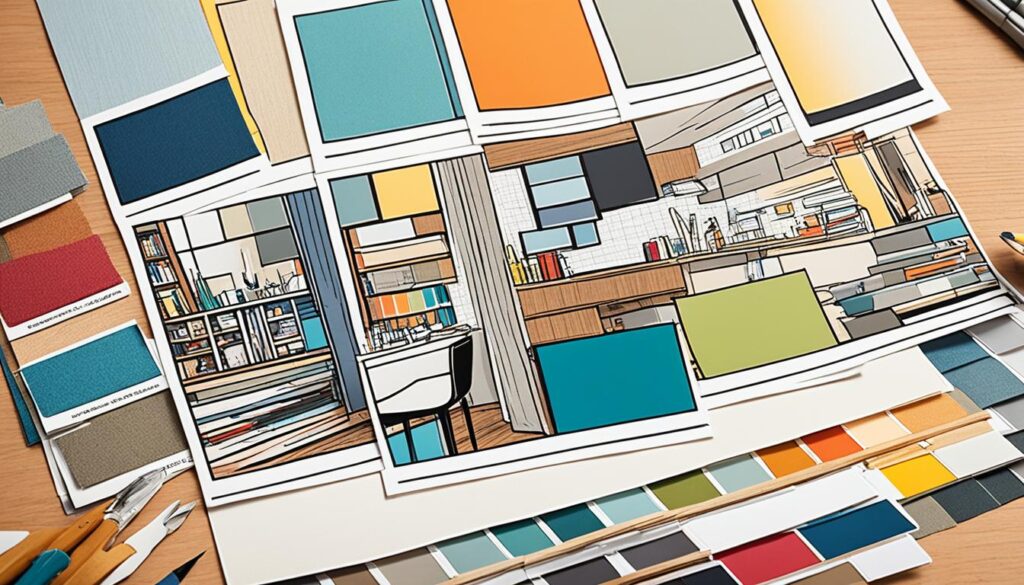
The right combination of colors and textures not only enhances the visual appeal of your mood board but also boosts your confidence in making design decisions. By mastering these techniques, your ability to craft effective mood boards will surely improve, providing a deeper understanding of your design aspirations.
Digital vs Physical Interior Design Boards
Understanding the differences between digital vs physical interior design boards can greatly impact your design process. Each type has its unique strengths suited for various scenarios.
Benefits of Digital Design Boards
Digital design boards have gained popularity due to their flexibility and convenience. You can easily manipulate images and elements to refine the design concept. Here are some of the key benefits of digital design boards:
- Quick iterations: Easily adjust designs with tools like Canva.
- Simple sharing: Instantly share concepts with clients and collaborators.
- Access to diverse resources: A vast array of online images enables a broader exploration of themes.
- Save time: Quickly generate mood boards without the hassle of sourcing physical materials.
When to Use Physical Boards Instead
While digital boards offer many advantages, there are specific instances when physical design boards come in handy. Here are scenarios where using physical boards is beneficial:
- Workshops: Interactive environments benefit from tactile engagement with materials.
- Client presentations: A physical board can foster deeper discussions about design elements.
- Creative exploration: Working with actual fabrics and finishes may inspire new ideas.
In summary, whether you lean towards digital or physical boards, each has its purpose in the interior design realm. Finding the right moment to utilize these boards can enhance your overall design effectiveness.

| Criteria | Digital Design Boards | Physical Design Boards |
|---|---|---|
| Ease of use | Highly flexible and easy to adjust | Requires manual sourcing and arrangement |
| Sharing | Instantly shareable via digital platforms | Requires in-person presentation or photography |
| Client Feedback | Allows for rapid modifications | Encourages detailed discussions with tangible samples |
| Resource Variety | Access to vast online resources | Limited to available physical samples |
| Creative Process | Fosters quick exploration and ideas | Provides a hands-on experience for confidence building |
Conclusion
Crafting effective interior design boards is a transformative step in your design process. Mood boards serve as your blank canvas for storing ideas and curating stylish looks, allowing you to visualize the direction of your project. This practice ensures all elements of home decor—from furniture selection to color schemes—are cohesively planned and executed, which is crucial for design success.
Your mood board, whether physical or digital, acts as a central repository for ideas and inspirations. By defining the scope, such as focusing on a specific room like a bedroom, you can create a narrative that communicates your vision to clients and stakeholders. Incorporating various design elements, like styles, textures, and color palettes, also helps guide decision-making, avoiding potentially costly mistakes along the way.
In summary, the final thoughts on interior design boards highlight their importance as a visual tool that enhances communication, fosters creativity, and aligns various aspects of your design project. As you continue to explore and refine your skills in crafting effective interior design boards, you will undoubtedly find that these tools can lead to a smoother journey from concept to completion. Considering the impact of color psychology in interior design, incorporating these principles into your design boards can result in spaces that are not only visually appealing but also evoke the desired emotions and feelings. By understanding how different colors can influence moods and perceptions, you can strategically use them in your design boards to create specific atmospheres within a space. Ultimately, interior design boards serve as a crucial step in translating your vision into a tangible, well-executed design.
